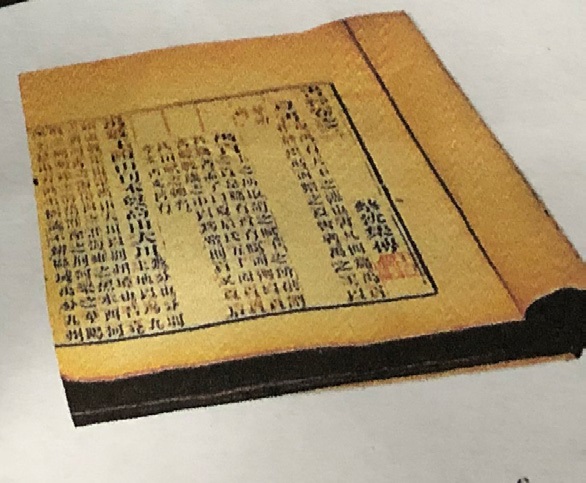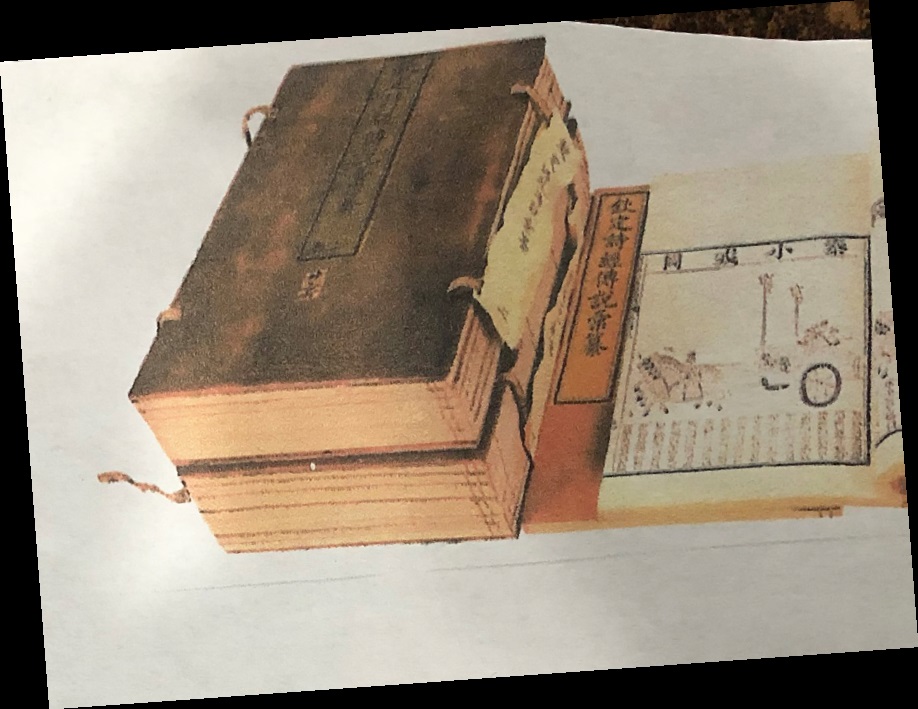
| What is Flavor and Fortune? |
| How do I subscribe? |
| How do I get past issues? |
| How do I advertise? |
| How do I contact the editor? |
Read 12891973 times
Connect me to:
| Home |
| Articles |
| Book reviews |
| Letters to the Editor |
| Newmans News and Notes |
| Recipes |
| Restaurant reviews |
| Article Index (all years, slow) |
| List of Article Years |
| Article Index (2025) |
| Article Index (last 2 years) |
| Things others say |
| Related Links |
| Log In... |
| Authors |
| Categories & Topics |
More Chinese History
| by Jacqueline M. Newman |
Food in History
Winter Volume: 2019 Issue: 26(4) pages: 28 to 29
During the earliest of times, excavations such as the Han one mentioned on page 19 and elsewhere, used boiled and steamed most foods. To: used boiled and steamed lots of foods. Culinary schools now teach these and other methods including roasting, red cooking, smoking, deep-frying, simmering, salting, cold mixing, stir-frying, clear sizzling, etc. Many use woks and other pans that did not exist then. Some they designed themselves, others were ideas borrowed from other people and places.

The Chinese still eat with chopsticks and spoons, and drink some of their foods. Exactly how or when new ones arrived in China, is not really known. When metals were first used and where they came from is an unknown. Where most of their newer foods came from is also not known. We assume most foods are those they grew or caught, or they reached China from the four thousand miles of coastline.
China’s early food history began when people grew and processed their own food, some even shared it. This they did since they began hunting for things to eat. Now, the Chinese are one-fifth of the world’s population, and since early times did write about what they ate in volumes such as The Book of Songs. They were probably one of the earliest countries to do this, certainly to write down what they did and believed.
They also absorbed behaviors and food ways of others, grew and ate foods they learned watching others, and thanks to open minds and intermarriages, did learn from many others. This education from their forebears during Qin and Han Dynasties (221 - 206 BCE and 202 BCE - 220 CE, respectively), kept them learning and expanding their knowledge. We know much about them, thanks to these written words.
What they practiced and wrote down is better known now because of folks such as Xai Nai, an Egyptian archeologist with a London University doctorate, who himself wrote about much in more than two hundred papers he wrote during the fifty years he shared his knowledge via the written word. One such was thanks to a 1970 excavation he reported about that was a large Han Dynasty tomb. There were others before and since.
That mentioned tomb was well-stocked with bamboo cooking utensils, metal woks, ceramic steamers, and more. It was a treasure trove of more than three hundred recipes for chicken, duck, pheasant, quail, dog, pig, lamb, and others, and many of them were how these different dishes were prepared and served, probably by the upper class folk that were written about. He also found visuals, not always distinct, on many murals in this tomb that showed details of bakers, cooks, and wine makers preparing their specialties. They showed their beverages and pastries, all local Chinese products. Not all steps in every process was clear, but many were clear enough to figure out what they did to prepare them.
There have been dozens of excavations before and since, fortunately not all at the same time. More was learned at each of them, and with these past experiences, we believe more will be learned as time goes on to enable additional information. Had they all been excavated at the same time, this would not be great, because before and since, techniques have improved, knowledge gleaned, and later digs and explanations better after each previous one.
Methods continue to improve. We now know that rice was grown in China more than eight thousand years ago. Yes, there are some who dispute this, but only because newer techniques tell us it actually grew one and a half times earlier than that. We also know they grew and used soybeans five thousand years ago, bred pigs a thousand years less than that, and raised cows, sheep, and goats a thousand years after that. So, with each new excavation, we learn more about the earlier ones.
During the Han Dynasty, only a small percent of the land was arable. We now know that it took more than half of their population laboring to produce enough food for the people. They barely had enough to eat, grew a lot of it, and imported foods from the Middle East, Malaysia, India, the ‘Stan’ countries, Korea, and further a-field. They are still importing foods, even more now than they did then; and these newer ones come from North and South America; corn and chilies good examples of this. Many imported earlier were thanks to Europeans and Arabs who did help transport them to many places in China and throughout Asia. Now, they come from further away and do stay fresh thanks to arriving by air.
But this is an assumption, not yet a fact. Which foods came from where and when is still being explored.
Many foods came to China from countries including Manchuria, Mongolia, Russia, Korea, Japan, the many ‘Stan’ republics, Tibet, India, Nepal, Burma (now known as Myanmar), Laos, Vietnam, and/or elsewhere, but exactly when and from where, we know not.

China’s early culinary beginnings we know were from the Yangshao stone-age culture more than five thousand years ago. We now know they did raise rice and millet, and ate imported barley and wheat they later grew themselves. How much came overland, what arrived by sea or was netted from nearby rivers is another unknown. Which animals were captured and later domesticated, which imported then raised in China is yet to be detailed.
China is the most populous country now has about one and a half billion people. They live on the almost four million square miles of their land, are the second largest country in the world, have vast diverse forests, deserts, rivers, plains, seas, and other territories. They are one of the earliest civilizations, began with a heredity dynastic monarchy that was fractured and reunified many times, the last time well past the middle of the nineteen hundreds, and was then taken over by the communists. The Chinese are known for their own high quality and quantity, their diverse food supply and many ways to cook each item in it. Many consider their cuisine the best and most diverse in the world; and it is a cuisine eaten by more people at any one meal and on any one day anywhere in the world with some of the best and most varied dishes also anywhere in the world.
They used to eat a small amount of meat, lots of vegetables, and some fruit, and drink lots of good wines, a luxury now many enjoy. They have known famine and malnutrition, they cook most of their food quickly as their fuel supply is limited, their culinary variety not in short supply.
About ninety-three percent of the Chinese people are Han, the remaining called ethnic minorities, fifty-five ethnic groups recognized by their government, many of whom have their own language and culinary traditions. Those living in the North eat various grains making them into breads and other baked goods. Those living in the South prefer and eat rice, their staple.
That is if they originated near or south of the Yangtzi River. It is their main caloric staple, one they eat at almost every meal they consume.
They love all varieties of and consume many Brassica vegetables, eat many soy and other beans whole and/or as flour, consume many leafy vegetables, also fruits such as tomatoes, cucumbers, daikon, other radishes, other vegetables, and more vegetables than most other people. Their main meat was pork, probably still is, and lamb replaces it in the west and northwest for those for whom beef is forbidden. Fish dominates the diets of Chinese living along the coastlines, and soup was and is their main beverage.
Dumplings are a universal snack in all eighteen provinces, each of which has its own unique cuisine, tastes too. Some are more sophisticated and innovative than others, some dishes and diets more varied and vitamin-rich than ever, but now also higher in fats, sugars, and milled grains, their overall lives richer and better than ever before. These days, they are probably more Chinese millionaires than among people of other countries in the entire world, and this feeds their continuing to be among the world’s best fed, tough they do have pockets of famine and disease impacting them.


Copyright © 1994-2025 by ISACC, all rights reserved
Address
3 Jefferson Ferry Drive
S. Setauket NY 11720